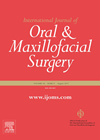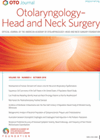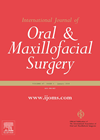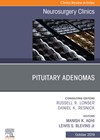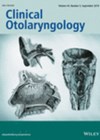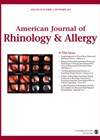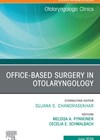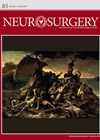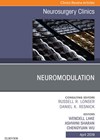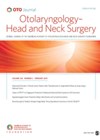
Journal Reviews
Clinical histopathology of 250 parotidectomy patients
Clinical histopathology of 250 parotidectomy patients This is a retrospective study of 250 consecutive parotidectomy patients at units in Belgium and the Netherlands. The sensitivity and specificity of FNAC was 64% and 99% respectively, the sensitivity being slightly lower than...
Intraoperative identification of primary tumours in unknown primary head and neck cancer using transoral laser microsurgery with frozen sections
The aim of the study was to compare the sensitivity and specificity of intraoperative identification of primary tumours in patients with unknown primary head and neck squamous cell carcinoma (UP HNSCC) using transoral laser microsurgery (TLM) with frozen sections, with...
Surgical management of refractory osteoradionecrosis
This is a French single-centre, 10-year experience of 55 surgical resection and reconstruction procedures. They claim an overall effectiveness rate of 92.3%. A total of 36 segmental and 19 marginal mandibulectomies were performed. A variety of free flaps were used,...
Hierarchy of orthognathic surgical stability
This study was designed as “an overview” of secondary studies and analysed 15 articles. Two procedures were considered highly unstable: a bilateral sagittal split osteotomy for clockwise rotation of the mandible with bi-cortical screw rigid internal fixation, and posterior maxillary...
3D endoscopy in pituitary adenoma surgery
Endoscopic approach for pituitary adenoma surgery is well recognised. There has been recent refinement of 3D endoscopy technology which improves on the depth of vision offered and more compact delivery. This may improve visualisation of the critical structures involved in...
Is the greater auricular nerve important in parotid surgery?
The greater auricular nerve (GAN) is often partially or totally sacrificed during parotidectomy procedures. This was a retrospective study comparing auricular sensation and quality of life in patients that either had their GAN preserved or sacrificed. In the shortterm, patients...
Sinus implants to treat recalcitrant polyps
It is well established that the burden of chronic rhinosinusitis on healthcare costs and patients’ quality of life is high, and that current mainstream treatment options of oral or topical steroids are not without problems. This paper compares two RCTSs...
Office-based otology procedures
This edition of the Otolaryngologic Clinics of North America covers office-based surgery in ENT. This article discusses procedures in otology that could be performed in the outpatient setting and covers innovations in office-based otologic procedures. The endoscope features prominently in...
Is surgery in obese children with obstructive sleep apnoea effective?
The authors present the results of their literature review and meta-analysis of studies examining adenotonsillectomy, uvulopalatopharyngoplasty (UPPP), supraglottoplasty, tongue base surgery or a combination in obese children with obstructive sleep apnoea (OSA). The one study investigating effects of UPPP was...
Paediatric versus adult pituitary adenomas
This retrospective study compares paediatric with adult patients undergoing pituitary adenoma surgery over a period of 26 years at a single institution. All surgeries were performed via a sublabial approach using the operating microscope. An endoscope was used occasionally for...
Peripheral nerve stimulation for chronic refractory pain
Peripheral nerve stimulation (PNS) plays an important role in treating chronic refractory pain syndromes that manifest in limited distributions and overlap with areas of neurologic innervation. The process is generally thought to capitalise on the inhibition and activation of pain-related...
Sphenopalatine ganglion block in endoscopic sinus surgery reduces intra and post-operative morbidity
The authors present results of a meta-analysis to investigate the role of sphenopalatine ganglion block (SPGB) in reducing postoperative pain in endoscopic sinus surgery (ESS). An electronic database search (Pubmed, SCOPUS, Google Scholar, Embase, and the Cochrane Register of Controlled...

